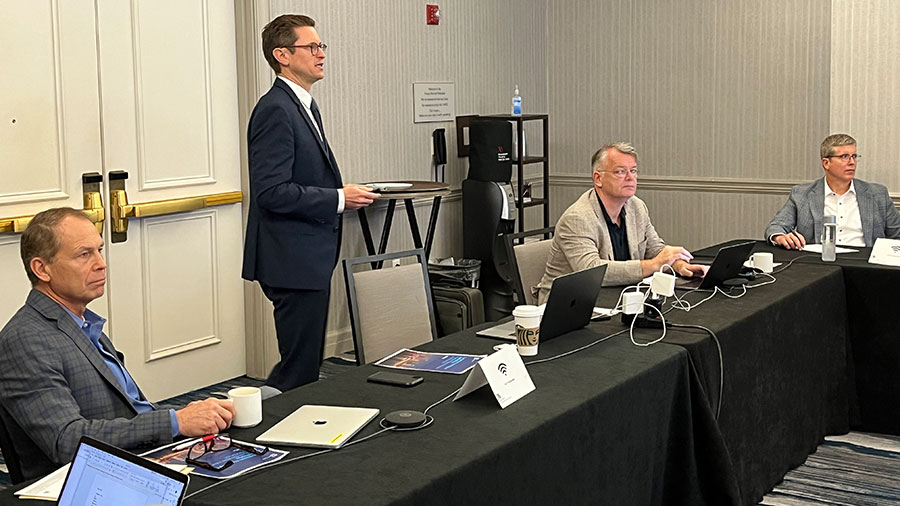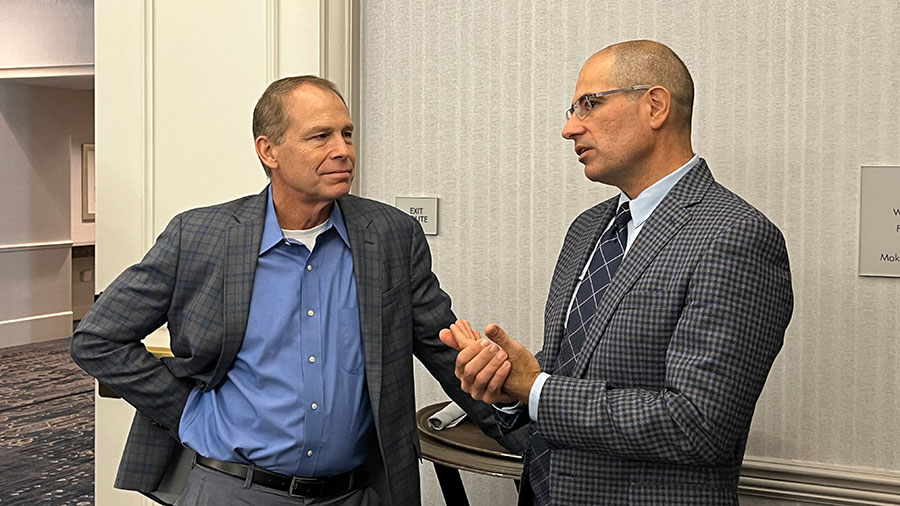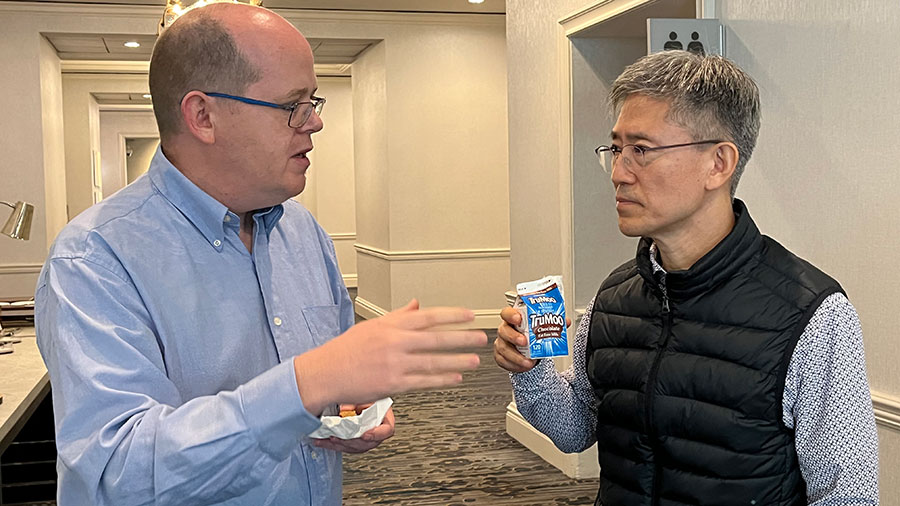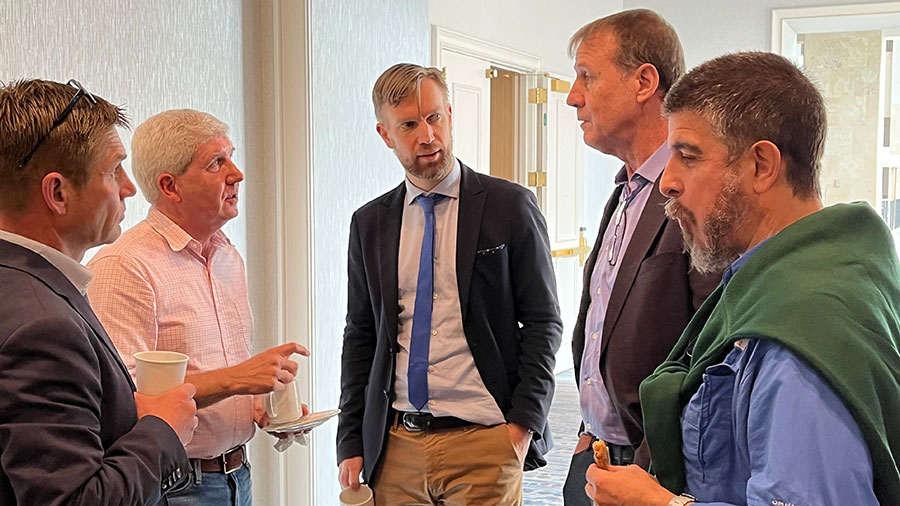AO Technical Commission brings together global key opinion leaders at fourth FRI consensus meeting
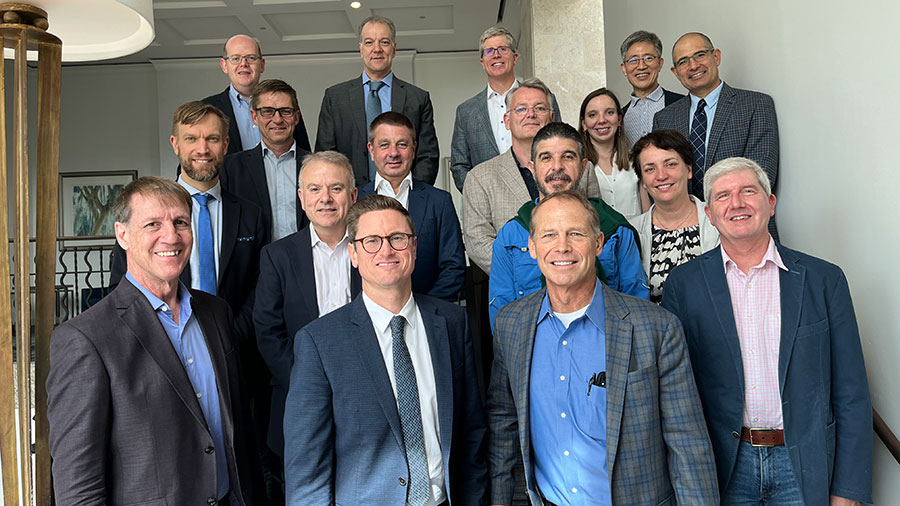
Taking part in the meeting were Expert Consensus Group members (back row, left to right) Fintan Moriarty, Charalampos Zalavras, Robert O'Toole, Jong-Keon Oh, (second row from back, left to right) Mario Morgenstern, Leonard Marais, Andre Trampuz, Michael Verhofstad, Jolien Onsea, Saam Morshed, (third row from back, left to right) Peter Giannoudis, Carlos Sancineto, Geertje Govaert, (front row, left to right) Kevin Tetsworth, cochairpersons Willem-Jan Metsemakers and Bill Obremskey, and Martin McNally.
This consensus group aims to develop consensus-based guidelines in the field of FRI and nonunion, paving the road for more uniform clinical protocols and higher quality clinical research in the future.
The recent consensus meeting in Tampa built on previous international FRI consensus meetings held in Davos, Switzerland, in 2016 and Zurich, Switzerland in 2018, where participants explored topics including the definition of FRI and subsequently, diagnostic and treatment principles for FRI. The topic of nonunion, which was addressed for the first time at the 2022 consensus meeting, is connected to the topic of FRI and requires greater consensus among the clinical community.
Historically, the quality of the clinical literature available on fracture-related complications has suffered from both the lack of clear definitions and widely accepted or adopted protocols regarding the diagnosis and treatment of complications like FRI. The AO is addressing this clinical need by bringing together a broad panel of expert surgeons and scientists with extensive clinical experience in FRI and nonunion; these experts represent professional organizations including the AO, the European Bone and Joint Infection Society (EBJIS), the Orthopaedic Trauma Association (OTA), and the PRO-IMPLANT Foundation.
Previously, a definition of FRI was successfully established at the first FRI consensus meeting in 2016. Following the second consensus meeting in 2018, the group published guiding principles for the diagnosis and treatment of FRI:
- Govaert, G, et al. Diagnosing Fracture-Related Infection: Current Concepts and Recommendations. J Orthop Trauma 2020;34:8–17
DOI: 10.1097/BOT.0000000000001614
- Metsemakers WJ, et al. General treatment principles for fracture‑related infection: recommendations from an international expert group. Archives of Orthopaedic and Trauma Surgery 2020;140:1013–1027.
- Metsemakers WJ, et al. Evidence-Based Recommendations for Local Antimicrobial Strategies and Dead Space Management in Fracture-Related Infection. J Orthop Trauma 2020;34:18–29.
DOI: 10.1097/BOT.0000000000001615
- Depypere M, et al. Recommendations for Systemic Antimicrobial Therapy in Fracture-Related Infection: A Consensus From an International Expert Group. J Orthop Trauma 2020;34:30–41.
DOI: 10.1097/BOT.0000000000001626
Since these documents were published, the term FRI has steadily gained traction in the trauma and scientific community. The availability of guiding principles for the diagnosis and treatment of FRI will promote improvements in patient care and outcomes globally. In the future, the aim is to develop a similar set of recommendations for nonunion.


